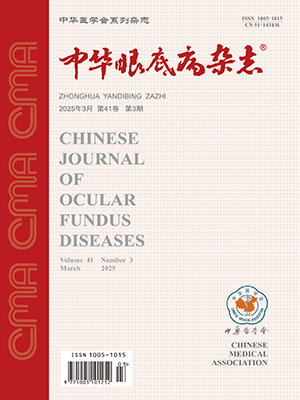Objective To investigate the occurrence, progress and conversion of hypotony in anterior proliferative vitreoretinopathy (aPVR), and to provide knowledge about how to prevent and treat it. Methods Animal models of chronic hypotony by aPVR were made with cultured ho mologous dermal fibroblasts on pigmented rabbits.The intraocular pressure (IOP) and ultrasound biomicroscopy(UBM) examination were taken preoperatively and on days 7,14, 28 and 56 postoperatively.Rabbits were killed on days 14, 28 or 56 postoperatively, prepared for histology and ultrastructure examination. Results The average IOP of experimental group was lower than that of control group on days 7,14,28 and 56 significantly (P lt;0.01).UBM demonstrated that trip like echo emerged in front of ciliary body four weeks postoperatively, and tractional retinal detachment was found four weeks and eight weeks postoperatively in experimental group. Microscopic examination showed atrophy orabsence of the non-pigmented ciliary epithelium on days 28 and 56 postoperatively in experimental group.Electronic microscopy showed that the amount of mitochondrions decreased and there were many vacuoles in the non-pigmented ciliary epithelium in experimental group four and eight weeks postoperatively. Conclusions Atrophic change of the non-pigmented epithelium due to dragging effect of the ciliary body from the epiciliary membrane in aPVR might be the main cause of hypotony. (Chin J Ocul Fundus Dis, 2001,17:216-220)
Citation: LIU Baichen,ZHANG Maonian,LIU Tiecheng,et al. An ivestigation on pathogenesis of chronic hypotony following anterior proliferative vitreoretinopathy. Chinese Journal of Ocular Fundus Diseases, 2001, 17(3): 216-220. doi: Copy
Copyright © the editorial department of Chinese Journal of Ocular Fundus Diseases of West China Medical Publisher. All rights reserved




